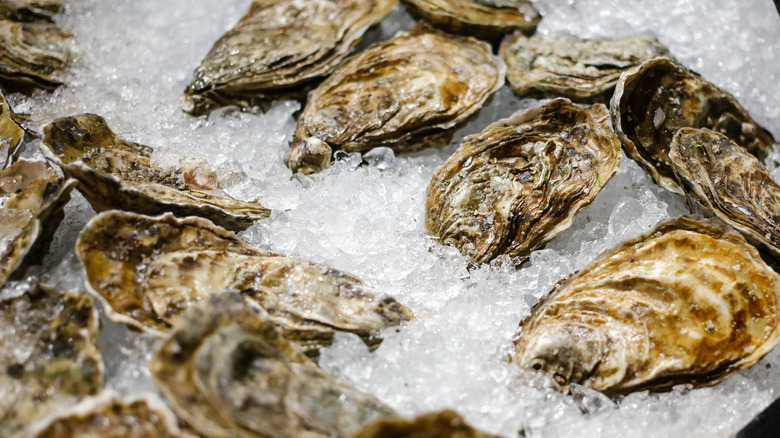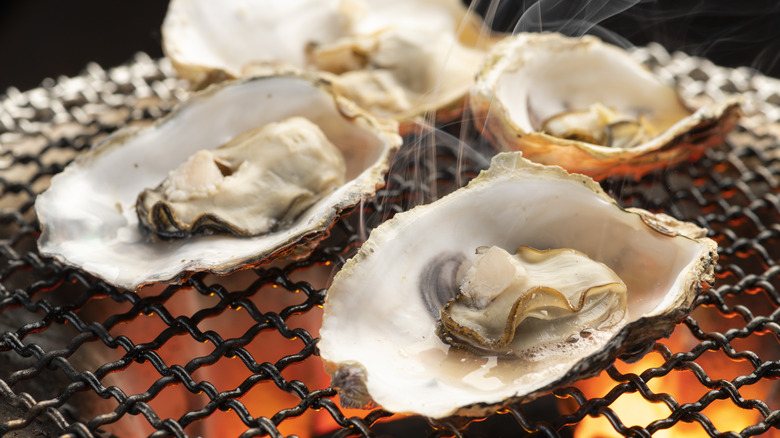Freezing Oysters Is The Most Effortless Way To Get Them Open
For centuries, oysters have been a sought-after seafood in North America and it remains the case today. Each year, Americans slurp down or cook up around 2 billion of the bivalves (via CNN). While that translates to an oyster aquaculture industry that's worth over $143 million (according to Mississippi State University Extension), it also means that there must be a whole lot of shucking going on.
Shucking is, simply, the removal of the oyster from the shell, typically strategically using a short metal knife with a dull blade created specifically for the task. But as anyone who has tried to shuck an oyster for the first time (or even many times) will likely say, the actual process is not that simple at all.
While author, seafood chef, and co-founder of Fish Tales Bart Van Olphen makes shucking an oyster look enviably easy the task can be a challenge (and even potentially dangerous if not executed correctly), especially for those newer to opening oysters.
So, how else can you pry that shell open to reveal the juicy inside of the briny bivalve? As it turns out there are a few other ways to get to the goodness inside of the oyster's shell, the easiest of which may be freezing.
Freeze and thaw oysters to effortlessly open their shells
While freezing oysters may at first seem antithetical to your end goal (after all, few things become easier to open when frozen), Ryan Croxton, who co-owns Rapphannock Oyster Co. with his cousin Travis Croxton, attests that this method actually recreates what sometimes occurs in nature.
"Honestly, a lot of these things happen to us on the farm — we have oysters that are exposed to low tide in the middle of the winter, and they get hit by the freezing cold. They'll die, and the second they thaw, they open," Croxton told Food & Wine. Croxton advises completely freezing the oysters, then moving them to the refrigerator. Once thawed, the shells pop open on their own. He also notes that the technique doesn't impact the shellfish's flavor or texture (via Food & Wine).
Matt Parker, an Aquaculture Business Specialist with the University of Maryland Extension recommends and demonstrates the process, too. He advises freezing the oysters overnight, then thawing them in a bowl until the shells open.
How to prepare thawed oysters
Since the Interstate Shellfish Sanitation Conference recommends against eating raw oysters that have been frozen, it's not a good idea to slurp them out of their shell (via ISSC). However, they can safely be incorporated into a number of cooked dishes.
Taylor Shellfish Farms says that previously frozen oysters can be consumed for 2-3 days after being thawed. However, the farm recommends grilling them straight from the freezer, saving the up to 18 hours that they take to thaw.
You can also use thawed oysters in any preparation that uses pre-shucked oysters that you might typically purchase at your local store or seafood purveyor. Oyster Obsession suggests using them in recipes for chowders and soups, dressings, and sauces as well as frying or sauteing them.
Whether you're making grilled oysters for a party, an oyster stew on a chilly evening, or oyster dressing for a holiday, you'll be in good company with all of the other oyster lovers scarfing down this shellfish each year. But with this little pearl of wisdom up your sleeve, you won't have the hassle of having to shuck.


